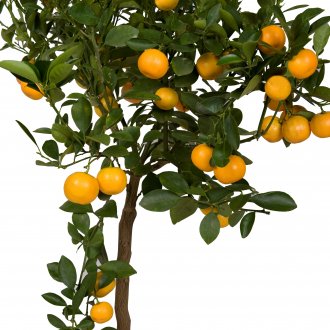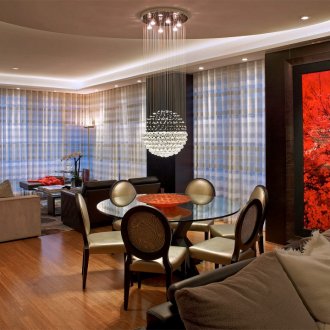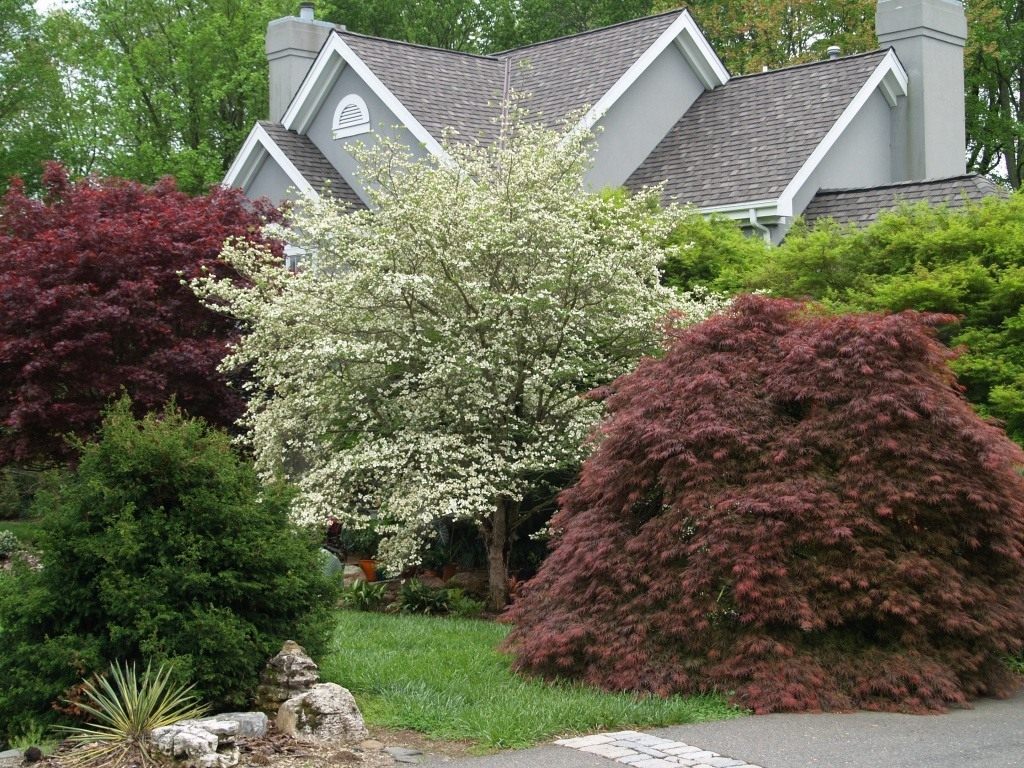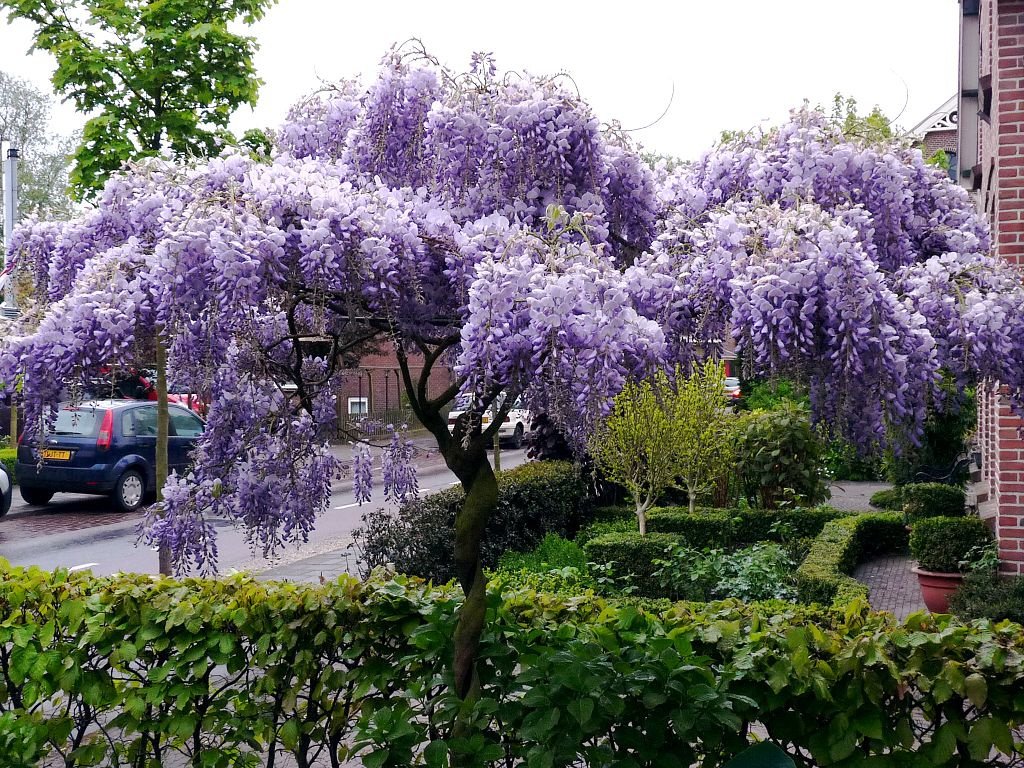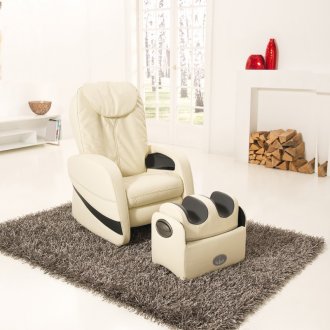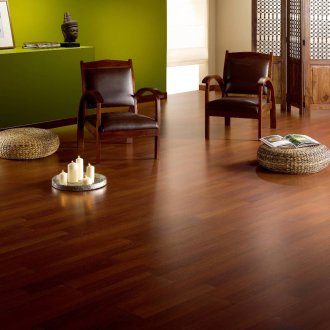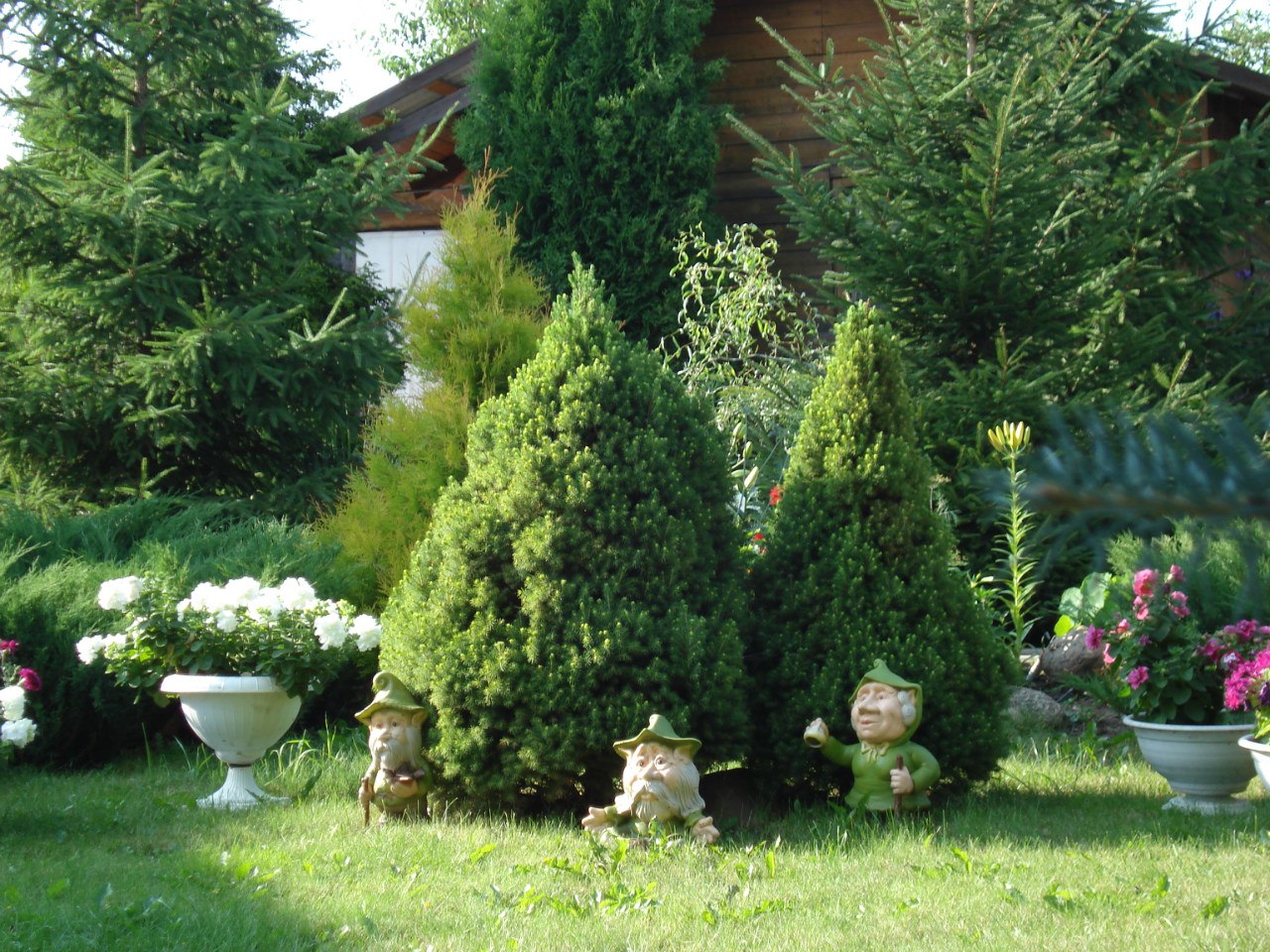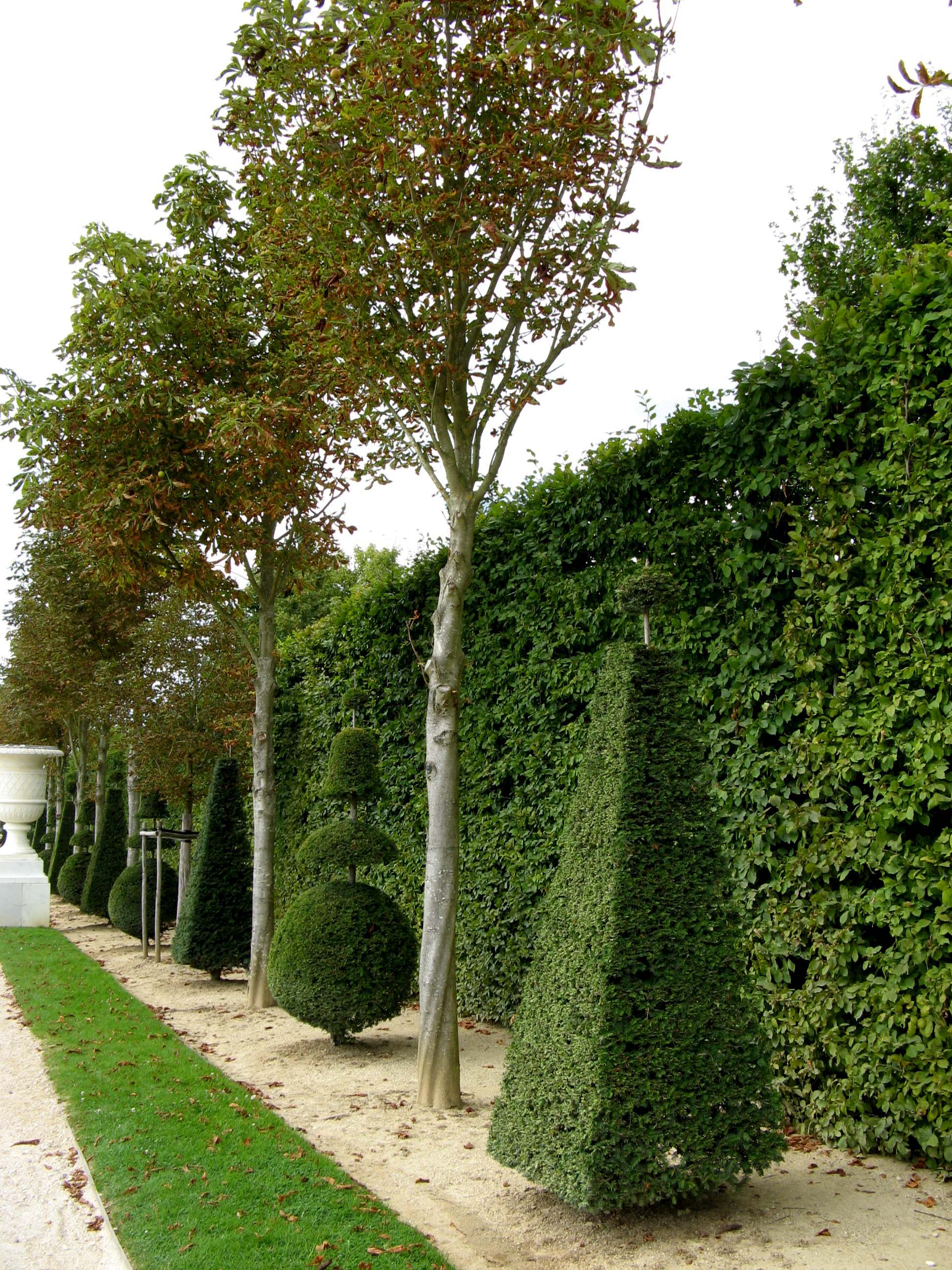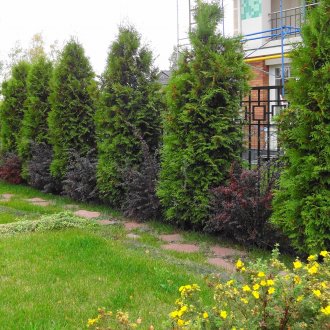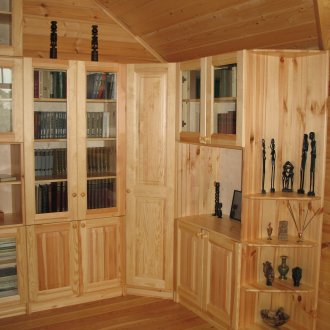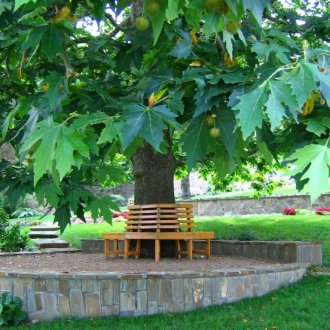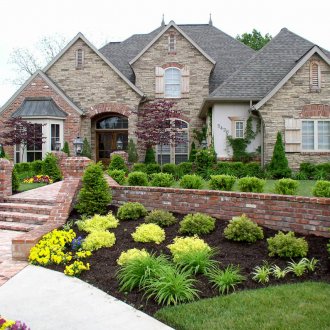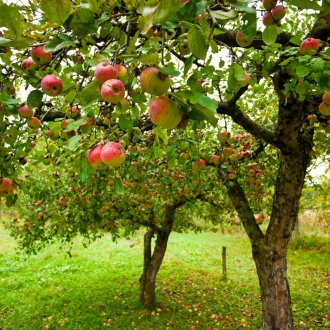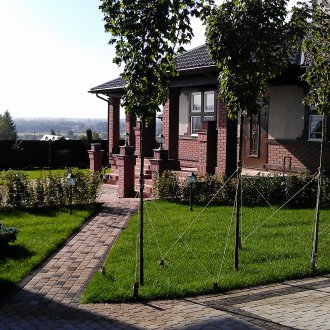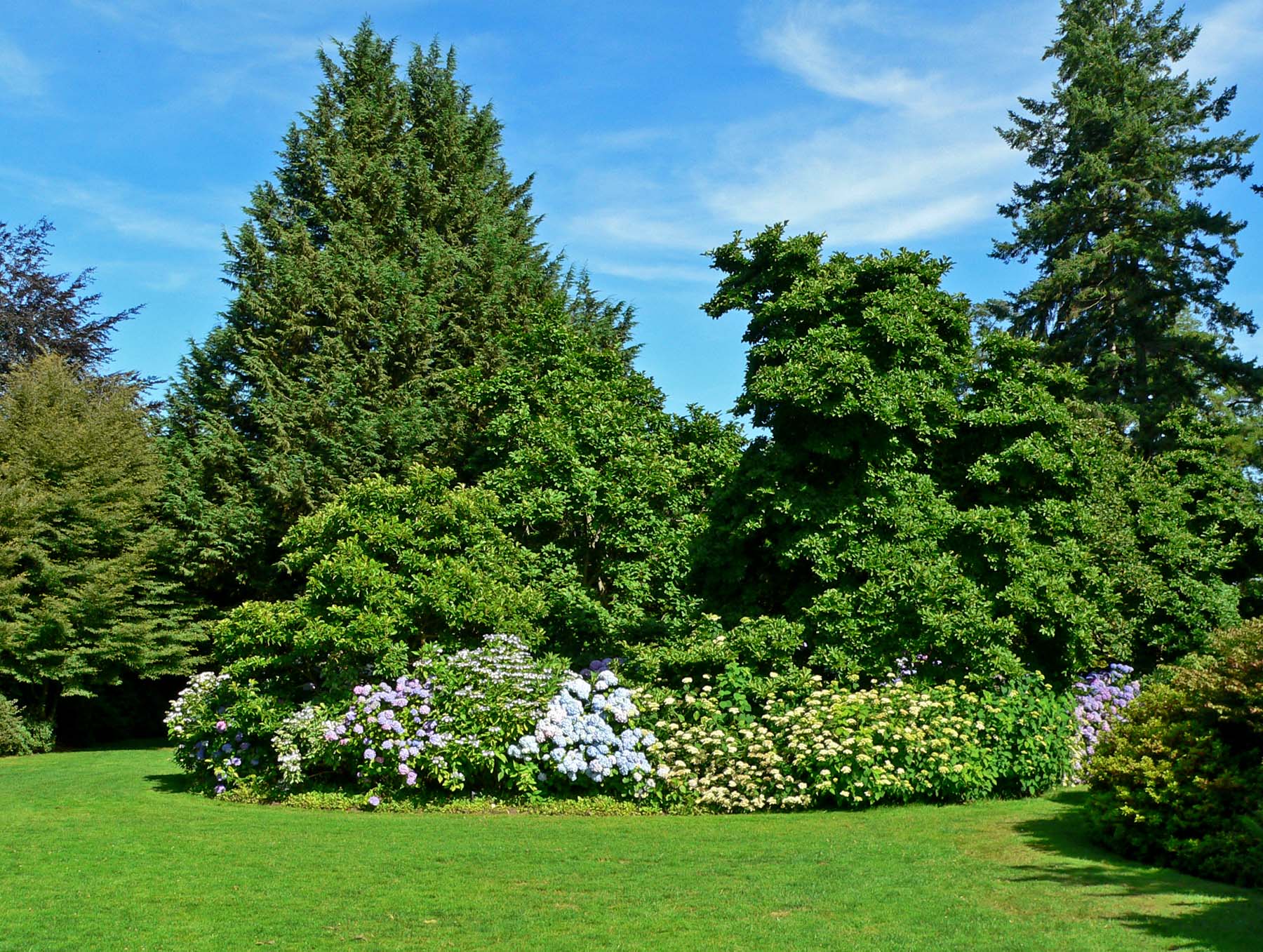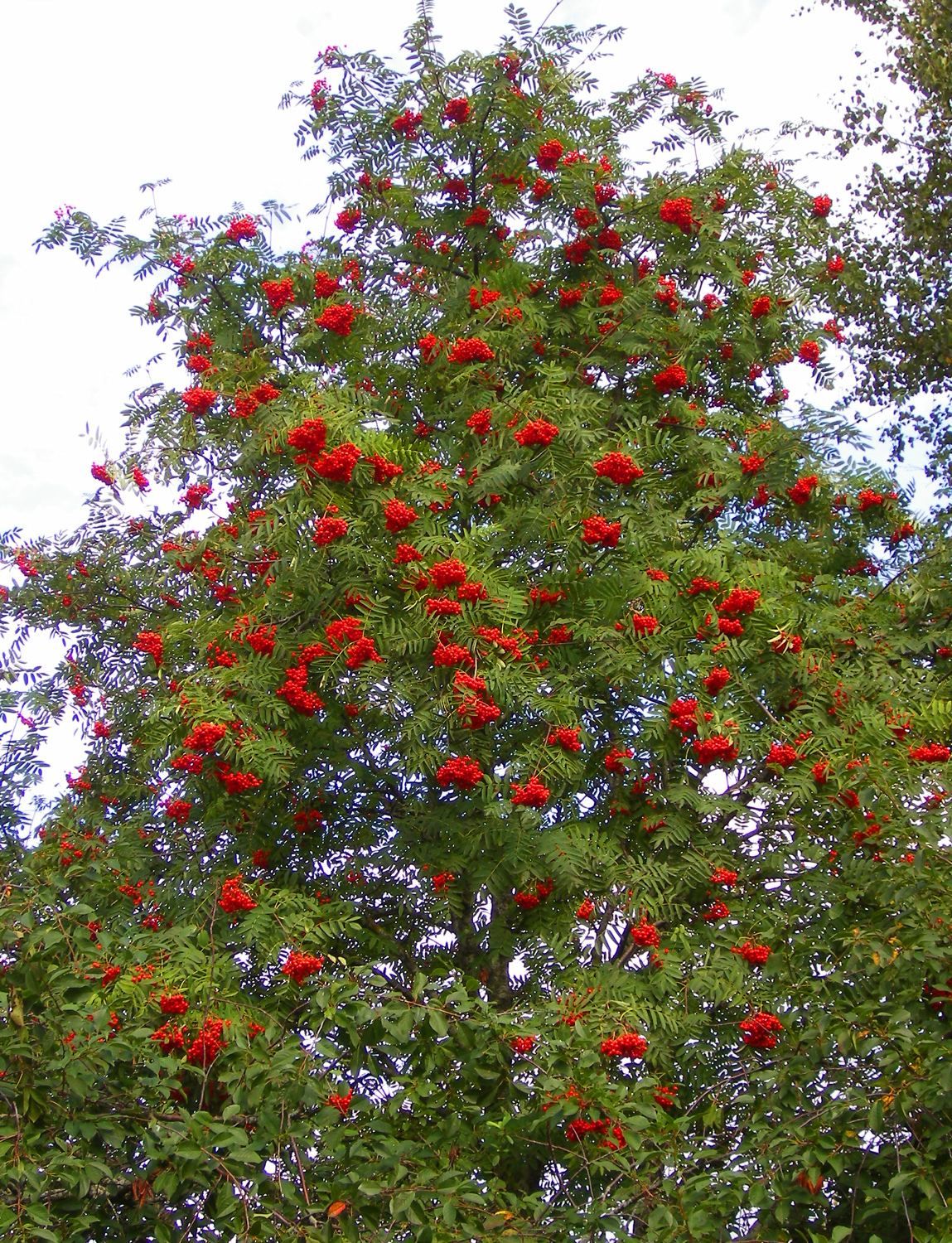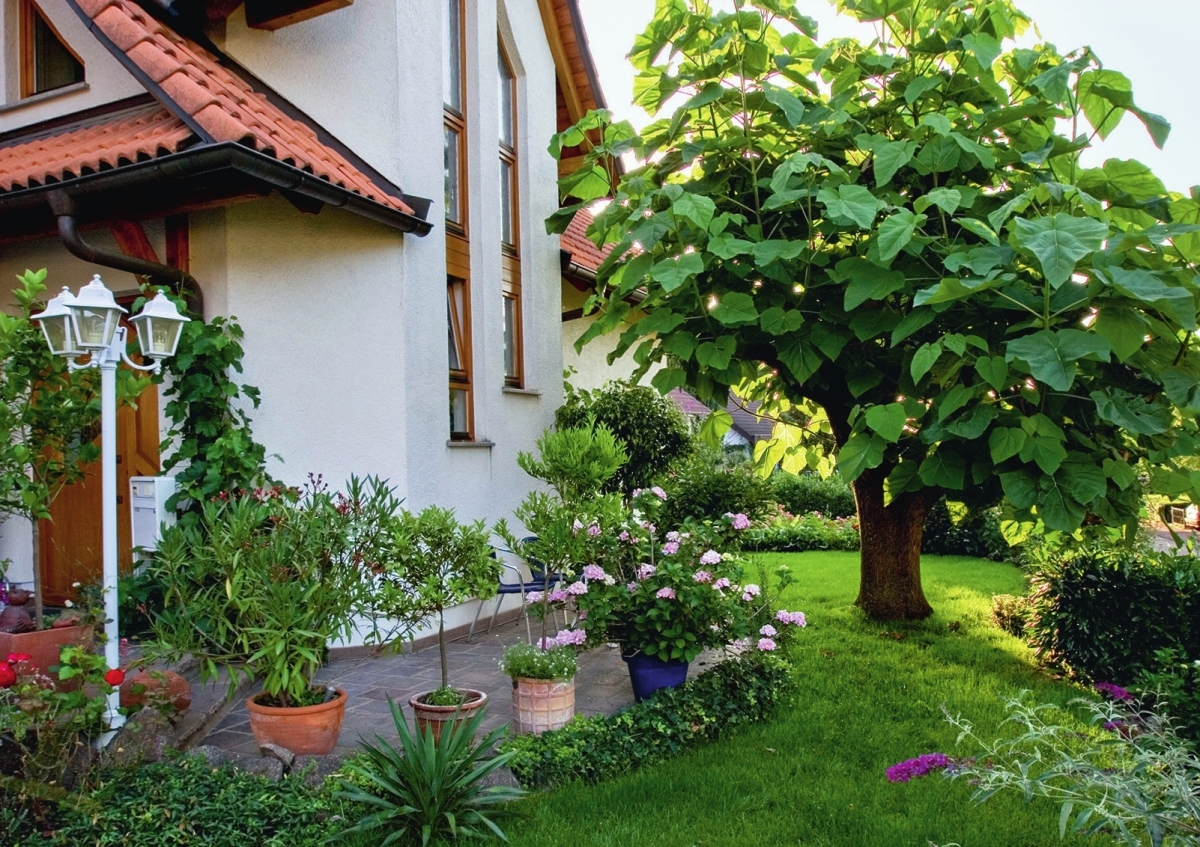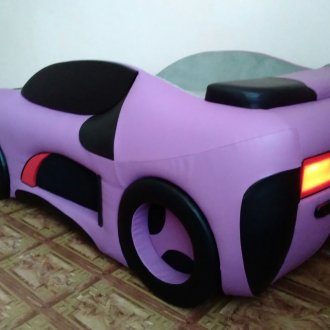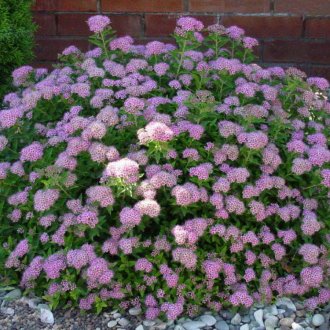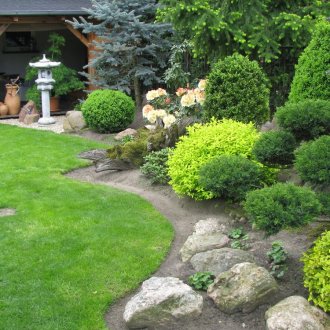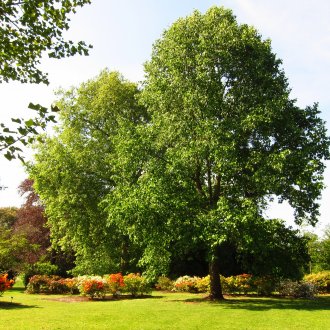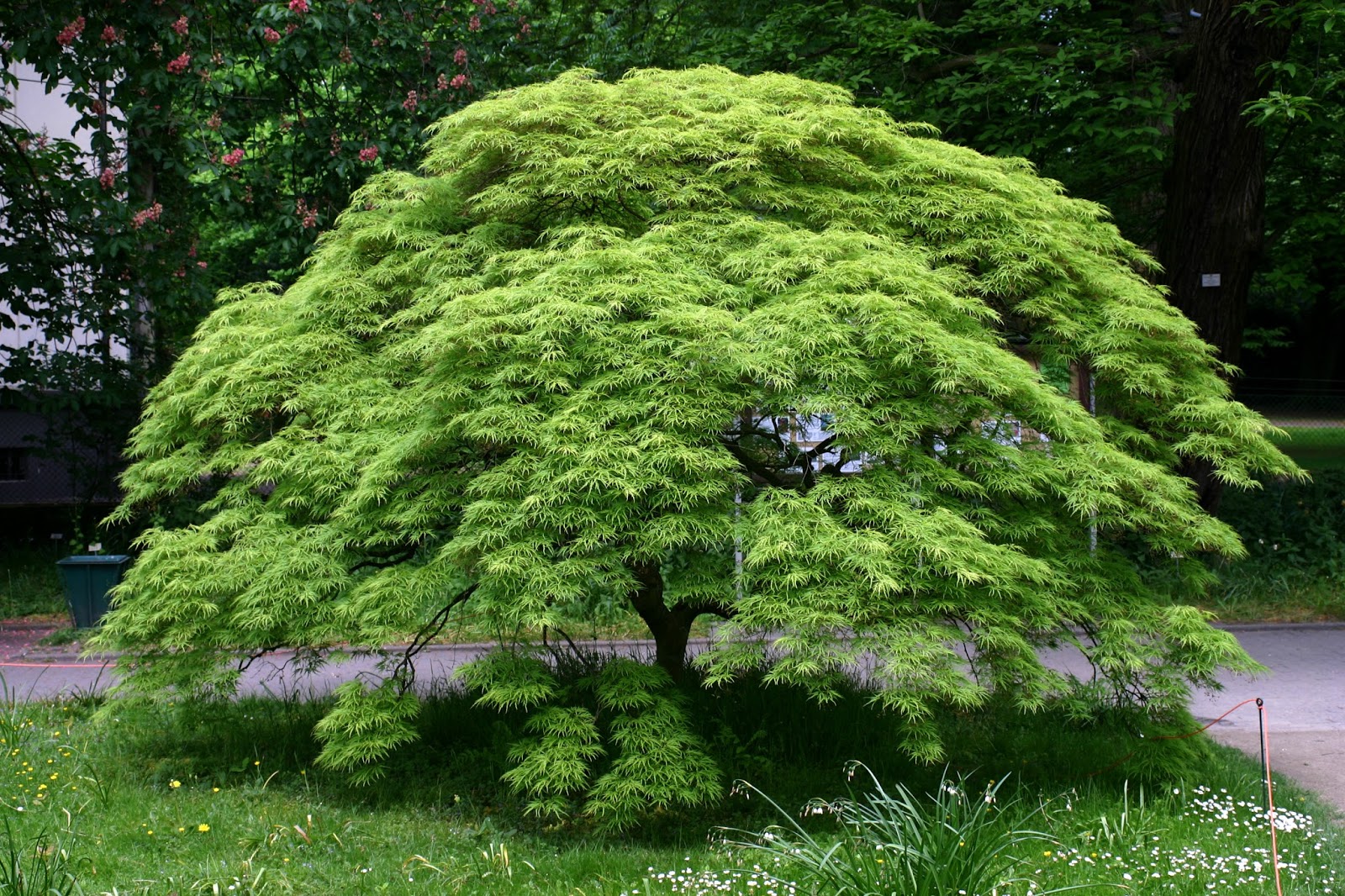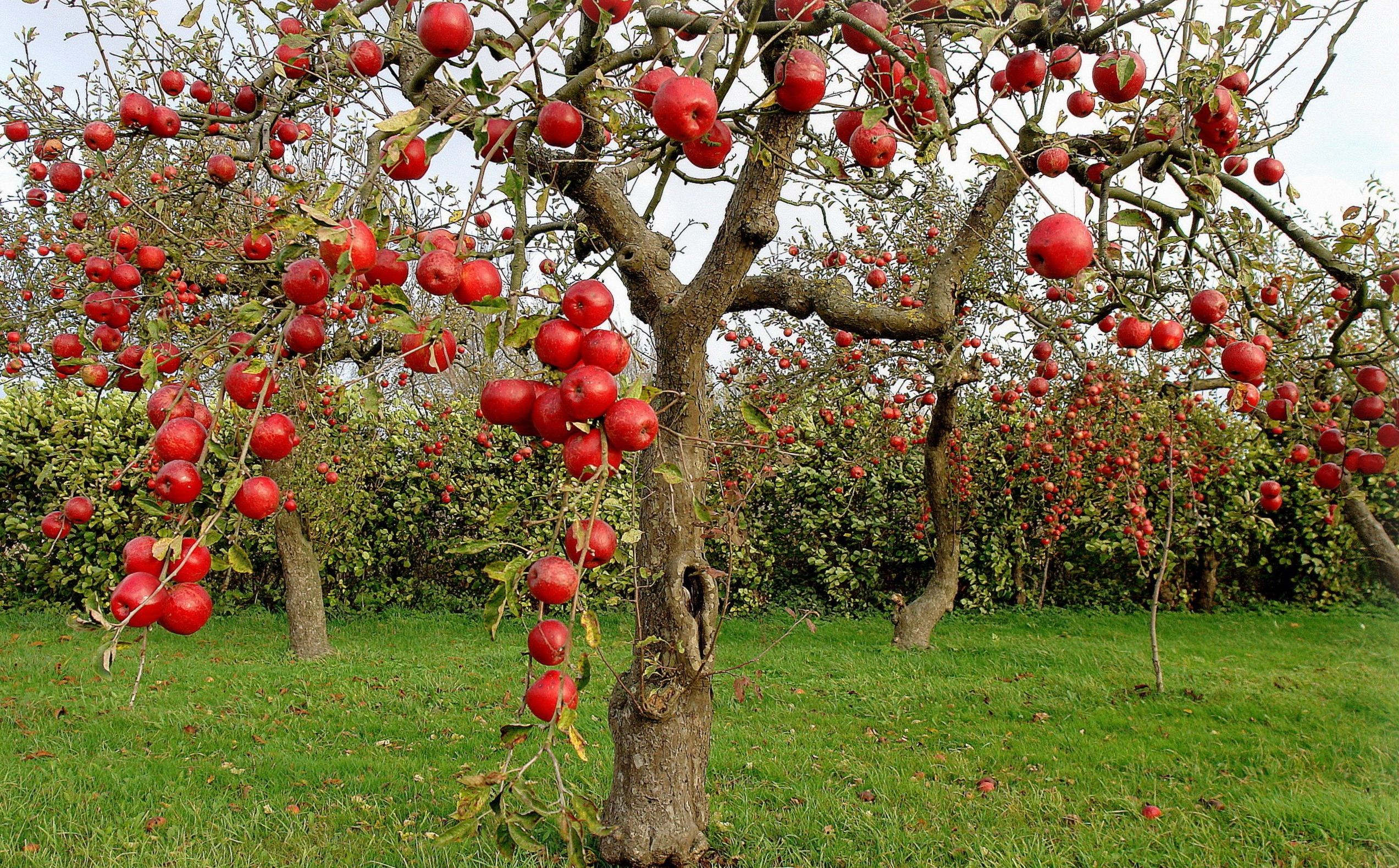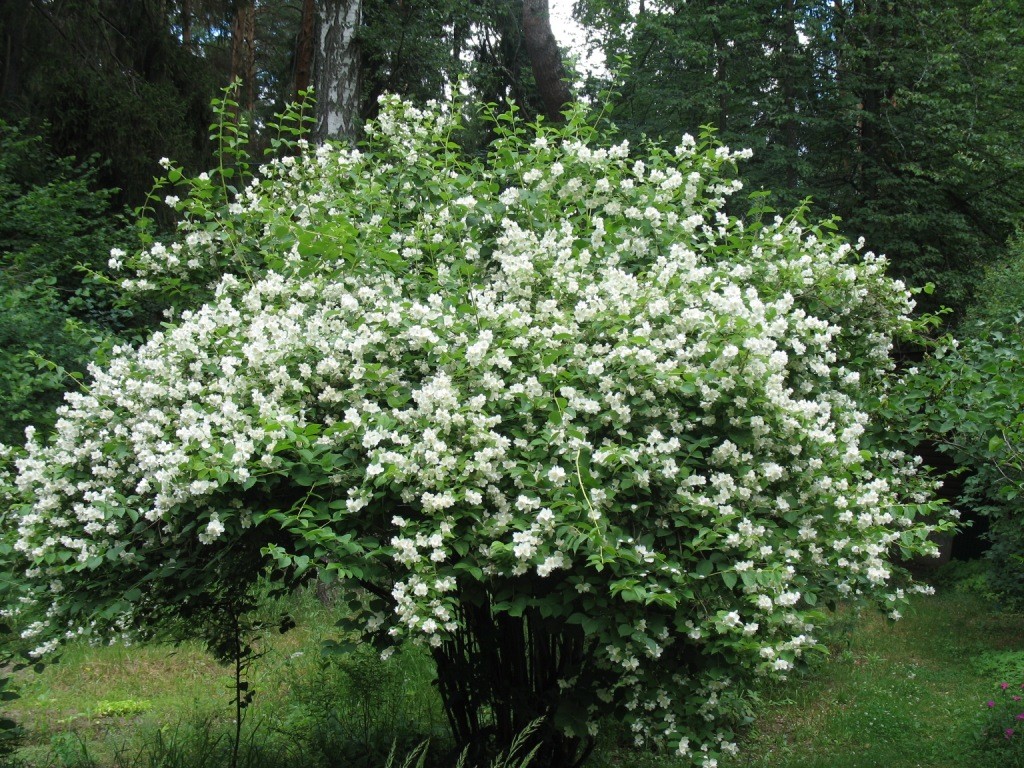Trees for the garden: choose a beautiful composition (24 photos)
Content
Many owners of summer cottages or private houses, having a personal plot, decide to set up a garden on it. What it will depend on the size of the plot, the climate in the area and the capabilities of the gardener. Garden nurseries offer a large selection of seedlings: fruit and berry, decorative, exotic. With the choice you need not lose money, because the trees grow for a long time, but first you need to determine how many trees and shrubs can be planted on the site.
How to calculate the number of seedlings?
There are certain rules for planting trees on a personal plot. For example, trees should not be too close to neighboring fences and power lines. Usually seedlings are placed at a distance of 5-6 meters. Between plantings, it is also necessary to observe certain intervals so that the growing trees do not obscure each other. When buying a seedling in a nursery, it is advisable to clarify how much space this crop requires, especially if it is exotic.
On average, the distance between trees and shrubs in a fruit orchard should be something like this: large fruit trees for the garden (apple, pear, apricot, sweet cherry) are planted after 5-6 meters, the distance between the rows should be slightly larger - about 8 meters for unimpeded transport carts and other garden work. Plum, cherry, peach and quince are planted according to a 3x4 meter pattern, grapes - 2.5x1.5 meters, raspberries - 0.75x1, gooseberries and currants - 1.25x1.5 meters.
While the trees are small, separate beds with vegetable or berry crops can be split between them. As the beds grow, they will have to be moved to another place.
Based on these restrictions, you can estimate how many seedlings you need to purchase for this site.
Types of garden: choose according to your abilities
Now you need to decide which garden is needed: fruit, berry, decorative or mixed. First of all, you need to consider how much time a gardener can take to care for a garden.
Least of all time will take care of wild-growing trees in a park-type garden - there grow maple, birch, ordinary or blue spruce. Care will be reduced to pruning trees in spring or autumn, whitewashing trunks, spraying from possible pests and mowing the grass between the rows. In such a garden, you can add mountain ash, viburnum, lilac, bird cherry. They will add bright colors to the garden, but also unpretentious.
The most common type of garden is mixed, in which fruit crops and ornamental grow. Such a garden will have to pay more attention. In mixed gardens, usually decorative crops are planted next to buildings: a house, a veranda, a gazebo, and they are surrounded by ponds. Separately plant fruit trees for the garden.
Most of the time at the gardener will take care of the fruit and berry garden. For successful fruiting, each culture needs a whole range of measures for feeding, pruning and shaping, protection from pests and frosts. In this case, the gardener will have to study a lot of information. Advanced gardeners do tree grafting on their own.
Garden style
You also need to determine the style of the future garden.He can be:
- regular - it is distinguished by smooth rows of neatly trimmed trees, well-designed landscape design;
- landscape looks as if all the vegetation has grown by itself.
In order to get the effect of naturalness, you need to work hard, carefully considering how to place trees in the garden.
How to plan a garden?
When buying seedlings and planting them, the gardener should have a good idea of how they will look when they grow, that is, after a few years or decades. When choosing trees, you should consider:
- soil composition on the site;
- climate in the area;
- groundwater height;
- the shape of the site and its location;
- wood appearance;
- growth rate.
If the garden is planned landscaped, trees should not be planted in rows. Mixed groups are picturesque in which one tree is large, next to it two or three lower, and several shrubs of different species frame the entire group. When selecting seedlings for each such group, in addition to height, it is desirable to take into account the flowering time. A group in which flowering lasts a long period will always look spectacular. Also need to mix deciduous and evergreen plants. You can plant the following types in the garden:
- Coniferous trees. Now they are very popular, especially species with a figured crown: spherical, elongated, sprawling. Among conifers there are many bactericidal ones that cleanse the air of bacteria and viruses. Such conifers as juniper, cypress, thuja, spruce, pine, cedar are popular.
- Deciduous evergreens will delight the eye after the onset of leaf fall. These include holly, mahonia, rhododendrons, laurel cherry, wrinkled viburnum.
- Deciduous deciduous usually form the basis of the entire garden. Most often, fast-growing mountain ash, birch, low maples are chosen. They hardly freeze in winter and always look beautiful. If the size of the garden allows, you can plant such large trees as chestnut, walnut, oak, linden, Canadian maple.
When choosing seedlings, you must first focus on the climate. You also need to know the height of the groundwater in the area. A high level of groundwater suggests wetlands and acidic soils, which must be regularly calcified. In such conditions, not every tree will grow. The most resistant to such conditions from plum fruit trees, from decorative - weeping willow and willow. On moist soils, any shrubs except lilacs grow. Chubushnik, cinquefoil, black elderberry, rhododendrons, blueberries are popular.
Dwarf trees for the garden
Even on standard 5-6 acres, you can set up a beautiful and varied garden, if you select and arrange plantings correctly. When choosing fruit trees, preference should be given to low-growing columnar apple trees and dwarf root trees. They bring a small crop, but they take up very little space.
Popular varieties of apple trees for dwarf stock - Kitayka, Anis, Antonovka, Moscow Grushovka, Borovinka. Varieties of columnar apple trees for the middle strip: Medok, President, Ostankino, Vasyugan, Currency, Moscow Necklace. For small decorative trees, elderberry, witch hazel, American maple, common scumpia, mock up or garden jasmine, barberry, irga, Japanese spirea are suitable.
With particular attention, the owner of a small plot should approach the issues of pruning and plant formation.
Shade-loving trees and shrubs
Sometimes it is necessary to decorate with plants highly shaded areas of the garden, for example, behind a house, a solid fence or tall trees. In this case, you should choose those plants for which a small amount of light will not interfere with having an elegant look, blooming and bearing fruit. They need to be planted more sparsely than usual. Shady places like plants such as red elderberry, barberry, gooseberry, blackberry, hazel.From decorative ones, one should choose shade-tolerant rhododendrons, garden jasmine, forsythia, euonymus, and mahonia.
Exotic plants for the garden
Such plants in the middle lane can suffer not only from frost, but also thaws, spring melt water and lack of heat in the summer. Among exotic crops, you should choose those that are able to recover from the root and bloom on annual shoots. Exotics, southern cultures need to be carefully sheltered for the winter, making sure that the plant does not freeze and is not damaged by mice. These plants include magnolia, false acinia, New Mexico or Kelsey, sumac, catalpa, velvet, the legendary relict ginkgo.
Hedge
A hedge is a dense wall of shrubbery, planted instead of a fence, or framing other plantings on a site. For hedges, you need to choose shrubs that tolerate a haircut. A high hedge will come from varieties of small-leaved elm, juniper, blackthorn, arborvitae, and barberry. For decoration low currants, small-leaved linden, boxwood, cinquefoil, yew, vesicle.
Topiary - Topiary
Topiary is the oldest art of topiary. A skilled gardener can give the shrub any shape: animal, bird, geometric shape. To master this art is quite difficult, in addition to patience, artistic skills are necessary. But the resulting curly bush will be a unique element in the design of the garden. Although complex work is still better to entrust to professionals. And on your own, you can evenly trim the hedge, following the taut ropes as a guide, then try to give the rapidly growing shrub simple shapes of a ball, hemisphere, oval.
For experiments, you can plant shrubs such as noble laurel, Western thuja, yew berry, cypress, barberry, privet, boxwood ordinary.
From the rich variety of plants, you can create any garden to your taste on a large or small plot. If all plants are correctly selected, located and surrounded by your care, any garden will be beautiful - fruit, decorative or mixed.
